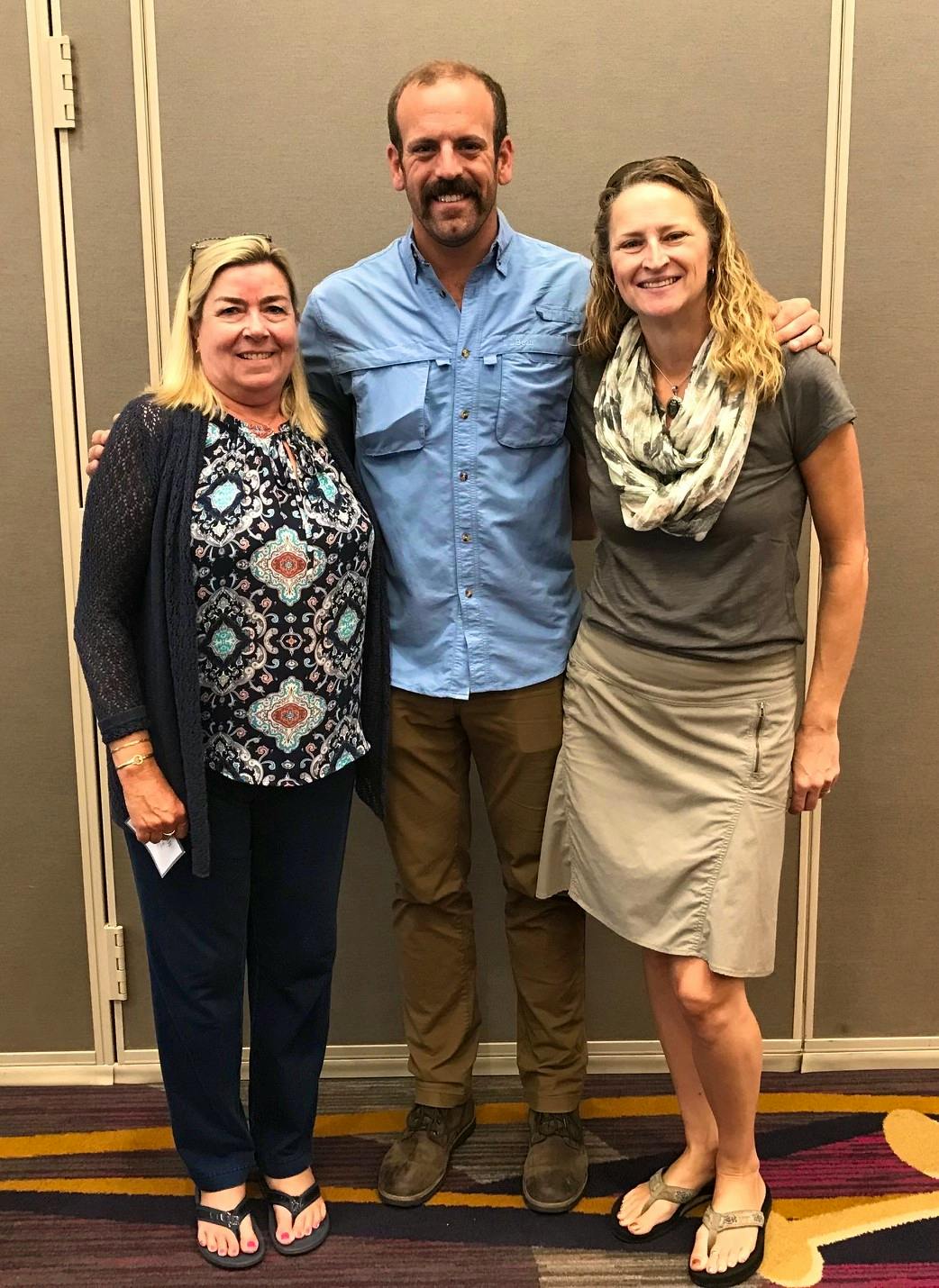Sacramento, California – the state capital and home of Defenders’ California Program headquarters – hosted the 2019 International Conference on Ecology and Transportation (ICOET) for the first time earlier this fall, and it was a resounding success! With its largest attendance ever, this 10th biennial conference included nearly 600 participants representing 44 states and 19 countries. It was truly enriching and inspiring to interact with and learn from ecologists and transportation specialists from across the country and around the world.
Defenders of Wildlife is proud to have played a role in ICOET’s success as a steering committee member – involved in many aspects of planning and implementing such a large, complex event – and as a sponsor of the conference and the mini Wild and Scenic Film Festival that kicked off the five-day event. Defenders had a strong presence at this year’s conference, including organizing and facilitating a three-hour symposium on wildlife-vehicle collisions, a workshop on updating reference guides for transportation planning with wildlife in mind, and a panel on successful legislation protecting wildlife corridors in the desert Southwest.


We also participated in field trips to the Pacific shoreline and Lake Tahoe. We learned how Highway 37 along San Pablo Bay and Highway 1 (California’s iconic “Pacific Coast Highway”) and associated ecological systems are being affected by sea level rise and extreme weather events – climate change impacts that are already taking place in these important stopover points for birds that migrate along the Pacific Flyway. On the trip to Lake Tahoe, information was shared about work by local, regional and federal agencies to mitigate pollution contributions from roads and urban areas, and to restore native fish and healthy aquatic ecosystems in the ongoing effort to maintain the lake’s famous water quality and “Keep Tahoe Blue.”


Senior California Representative Pamela Flick organized and moderated a three-hour symposium, "The Road to Wildlife-Vehicle Collision Mitigation is Paved with Good Data” (Part 1 and Part 2). This session included seven presentations from eight speakers, and truly reflected ICOET’s international reach with participants from Canada, Brazil and Spain – including the first-ever remote presentation at ICOET.
Talks in this symposium touched on a variety of topics at different scales, from opportunities and challenges in analyzing road mortality data to the eyebrow-raising notion that it’s more important to mitigate for mortality than for habitat connectivity. Presentations also included several specific projects, including preventing large carnivore road mortality in Europe, an innovative road-crossing structure put in place to protect threatened amphibians in the Sierra Nevada, and modeling black-bear vehicle collision zones in Yosemite National Park. Pam wrapped up the symposium with a podium presentation on legislative attempts in California to require standardized wildlife-vehicle collision data collection and reporting by CalTrans.
California has more than 34 million registered vehicles, 156,000 miles of roadway, ranks seventh in the U.S. in area of public lands, and contains the nation's highest level of biodiversity. Roads and highways impact wildlife directly through wildlife-vehicle collisions and indirectly by cutting off the movement of plants, fish, birds and other wildlife. Economic costs associated with collisions in California are approximately $300 million each year and increase every year.
Despite the threat posed to both humans and wildlife from ongoing collisions and loss of connected habitat, wildlife-vehicle collision data have been collected in an uneven and often haphazard manner. Most states have similarly incomplete surveys of roadkill and where data collection is more thorough, it tends to be for larger mammals and not accurately reflect the variety of species that are impacted.
These data are critically important to collect and make public so that they can be used to identify road segments where wildlife movements should be considered in transportation planning, project development, regulatory permitting and operations to result in wildlife-friendlier transportation systems.
Senior Florida Representative Elizabeth Fleming moderated a workshop to gauge interest in revising the 2007 Defenders publication “Getting Up To Speed: A Conservationist’s Guide to Wildlife and Highways.” Defenders produced the “GUTS” handbook, intended to expand upon efforts such as the Florida citizens guide and as a primer to help conservation advocates navigate the complex world of transportation planning and policy. Our interactive session at ICOET generated ideas regarding forums and reference materials to assist advocates in becoming more effective at conserving connected landscapes and preventing wildlife-vehicle collisions that take a terrible toll on many species. Participants expressed interest in engaging in collaborative efforts to develop work products to help conservationists continue to engage effectively to ensure that wildlife and habitat conservation is firmly part of transportation processes and policies.
In Florida, Defenders has worked on making roads safer for wildlife to cross since we opened an office in the state in 1994. Our initial work that was focused on the wide-ranging Florida black bear is now benefiting the endangered Florida panther.
We have been working to recover panthers for the last four decades — to secure and protect the large interconnected tracts of wild land they need to expand their range northward, to foster understanding of these wide-ranging and secretive predators and to increase safe passage across dangerous roads. In recognition of our longstanding commitment to panther recovery and work to advocate for conservation-minded transportation planning, Elizabeth serves as the conservation representative on the Florida Panther Recovery Implementation Team and as the liaison to and member of the recovery team’s transportation SubTeam. The role of the Transportation SubTeam is to identify and prioritize high panther-vehicle collision areas and recommend risk-reduction measures and south Florida and beyond.
In 2019, 16 panthers have been killed while crossing roads. As part of the Transportation SubTeam, we helped develop the Southwest Florida Panther Hotspots report and maps to help guide decision making and funding allocation for wildlife crossings and other tools to allow safe passage across dangerous road segments and identifying areas for crossings, bridge ledges, and more. We also provided extensive input to Florida Department of Transportation on revisions to its Wildlife Crossing Guidelines.
And recently, Florida Department of Transportation appointed Defenders staff to serve on task forces to provide input on three new highway projects proposed through some of the last undeveloped lands in the western Everglades up to the Florida-Georgia border. These highway projects have the potential to undo decades of conservation gains and could dramatically affect habitat for Florida panthers. Through our task force appointments, we now have an important seat at the table to shape the alternatives and advocate for maximum protection for wildlife and habitat.
Defenders’ Southwest Representative Michael Dax organized a panel “New Mexico's Wildlife Corridors Act: Protecting wildlife migration through state legislation,” which discussed New Mexico's Senate Bill 228, the Wildlife Corridors Act. This bill, which was the first of its kind, calls on New Mexico's Departments of Transportation and Game and Fish to compile a statewide Wildlife Corridors Action Plan, which will include information about barriers to wildlife movement, how degraded habitat can be benefitted by increased movement of species and how climate change will influence the movement of wildlife. It will also include a list of priority safe passage projects like underpasses and overpasses that will help protect both wildlife and the traveling public. The panel featured representatives from Wildlands Network, New Mexico Game and Fish and the New Mexico Department of Transportation, who were integral to developing the legislation.
This was a great opportunity, not only to celebrate the passage of the bill, but to share our experience of moving the bill through the legislature, talking about how previous safe passage projects became essential to demonstrating how more of these projects could benefit New Mexico, and shedding light on how our messaging evolved throughout the process to most effectively communicate about this complex issue.
Since New Mexico passed its bill, Oregon and New Hampshire have followed suit. As more states consider similar bills, our hope is that they can learn from our experience and realize success as well. Protecting the large-scale movement of wildlife fundamentally means that conservation will include multiple jurisdictions. The more states that pass legislation like this, the better – and Defenders looks forward to being a part of those victories!
In New Mexico, Defenders has continued to work with the Department of Transportation and Game and Fish to implement the Wildlife Corridors Act, but as that process unfolds, we are finding other ways to protect the large-scale movement of wildlife. All five of our national forests are undergoing forest plan revisions, and Defenders has been deeply engaged in those processes, ensuring the plans contain the necessary protections of key habitat areas along and beyond transportation systems.
For us, connectivity and corridors aren’t just about the large, charismatic species, but ensure our ecosystems are connected from top to bottom. This is why we are excited to partner with the NM Department of Game and Fish to study how road infrastructure is impacting the passage of fish and amphibian species in the northern Jemez Mountains.
Participating in ICOET in Sacramento was an inspiring experience. The world of conservation is often filled with dour predictions and species in dire straits, teetering on the brink of extinction. But this conference was all about partners in many different sectors working together across the world to come up with innovative solutions to protect wildlife, connect habitat and improve transportation. New Mexico’s Wildlife Corridors Act and the inspiration of other states was just the start of the success stories. Defenders is proud to be working with so many engaged specialists from around the world, looking forward to a future where our transportation needs are not hindering – and are in fact helping – the conservation of species large and small.










